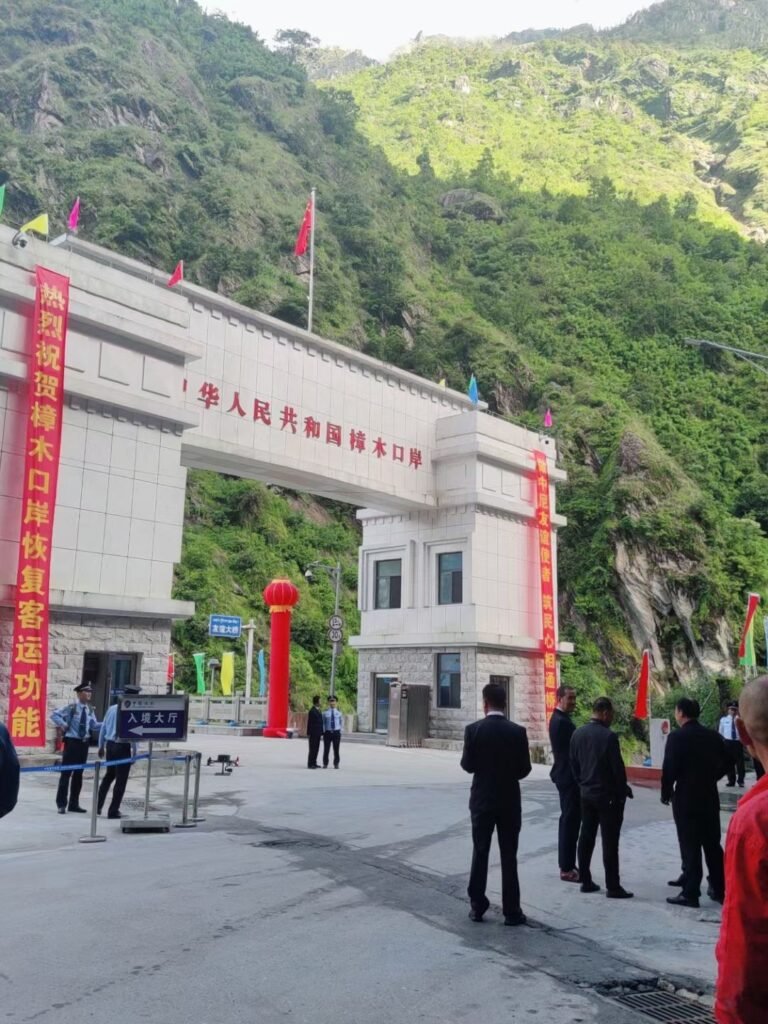On September 1, a momentous ceremony took place at the Friendship Bridge area, marking the resumption of transportation services at Zhangmu Port. This significant event represents a pivotal milestone in the political, economic, and cultural exchange between China and Nepal. Zhangmu Port, nestled in the heart of Tibet, has been a vital hub connecting these two nations. This article delves into the details of this resumption, the benefits it brings, and its impact on the broader region.

The Revival of Zhangmu Port
Following the devastating earthquake in 2015, Zhangmu Port had to temporarily close its doors. However, thanks to the collective efforts of various parties, it reopened as a cargo channel on May 29, 2019. Then, on May 1, 2023, it successfully resumed two-way cargo transportation. The revival of this port has not only restored vital trade connections but has also breathed new life into tourism activities.
Continuous Improvements
In recent years, Zhangmu Port has undergone a series of improvements to enhance its customs clearance capabilities. This included facility upgrades, risk management, and optimizations in the customs clearance process. Efforts have been made to support businesses and infrastructure in the travel inspection sector, creating a conducive environment for passenger travel. These efforts have laid a solid foundation for the port’s effective operation from September 1.
Strengthening Regional Trade and Tourism
Zhangmu Port plays a crucial role in strengthening friendly relations between China and Nepal. It actively participates in the high-level joint venture “One Belt, One Road” and systematically prepares for the restoration of transportation services. This resumption of transportation services serves as an essential starting point for fostering economic and trade relations with Nepal, promoting the Belt and Road project, and supporting economic and human development in border areas.
Benefits of Resuming Zhangmu Port
The resumption of Zhangmu Port not only encourages the establishment of a demonstration site for strong border and population growth in the Tibet Autonomous Region but also paves the way for increased passenger and cargo operations. It overcomes previous development restrictions and ensures a smooth and efficient customs clearance process. Zhangmu Port is poised to fully capitalize on its advantages and integrate itself into the Belt and Road initiative.
This will improve port operations, resume cross-border trade, enhance cooperation, and elevate Zhangmu Port’s role in Southeast Asia’s economic and trade relations. With its growing popularity and influence, it will significantly contribute to the development of the Tibetan economy and the region’s unique spatial character.
Distinguished Attendees
The resumption ceremony was attended by a notable list of dignitaries and representatives, including the Commerce Department, Tibet Autonomous Region Foreign Affairs Bureau, Shigatse Municipal Party Committee Propaganda Department, Municipal Commerce Bureau, Foreign Affairs Bureau, Nyalam County Party Committee, People’s Congress, Government, Political Consultative Conference, Port Management Committee, Nyalam Customs, and Nyalam Entry and Exit Border Inspection Station Comrades in charge of foreign trade agencies, among other esteemed individuals.
In conclusion, the resumption of transportation services at Zhangmu Port is a momentous event that not only reconnects two nations but also has far-reaching economic and cultural implications. The revival of this vital transportation link is a testament to the resilience and determination of the people involved. It opens new avenues for trade, tourism, and cooperation, benefiting not only China and Nepal but the entire region. The importance of Zhangmu Port in the landscape of political and economic relations cannot be overstated.
Frequently Asked Questions
Q: What is the significance of Zhangmu Port in the context of China-Nepal relations?
A: Zhangmu Port is a crucial link that promotes political, economic, and cultural exchange between China and Nepal. It plays a vital role in strengthening their friendly relations and is an integral part of the “One Belt, One Road” initiative.
Q: How did Zhangmu Port overcome the challenges it faced after the 2015 earthquake?
A: Zhangmu Port underwent a series of improvements, including facility upgrades and customs clearance process optimizations, to successfully resume its operations.
Q: What role does Zhangmu Port play in regional trade and tourism?
A: The port’s resumption is a significant starting point for increasing economic and trade relations with Nepal, supporting the Belt and Road project, and fostering economic and human development in border areas.
Q: How does the resumption of Zhangmu Port benefit the Tibet Autonomous Region?
A: It encourages the establishment of a demonstration site for strong border and population growth, contributing to the region’s economic development.
Q: Who attended the resumption ceremony at Zhangmu Port?
A: The event was graced by a host of dignitaries, including representatives from various government departments and agencies involved in foreign trade.


















